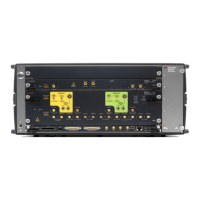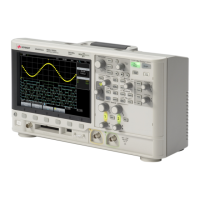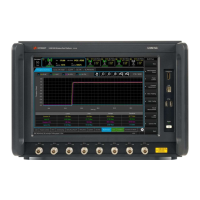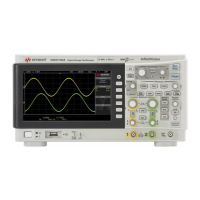310 Keysight M8000 Series of BER Test Solutions User Guide
6 Setting up Analyzer
Overview
The M8020A/M8030A/M8040A Analyzer examines an incoming bit stream,
compares it to the expected pattern, and locates any inconsistencies. The
Analyzer requires the following settings to work correctly:
• The expected pattern
The Analyzer needs to "know" which data to expect so that it can detect
bit errors. No expected patterns are required in BRM mode.
• Correct clock frequency
Required to recognize the bit rate in the data stream.
• Appropriate sampling point
The sampling point defines where the Analyzer tries to differentiate
between 0s and 1s in the data stream. This is necessary so that the
Analyzer recognizes the data bits correctly.
• Synchronization to the incoming pattern
The expected pattern must be synchronized to the incoming pattern so
that the Analyzer can find any discrepancies.
The Analyzer provides the following functions to enable you to perform
tests:
• Automatic pattern synchronization
The Analyzer shifts the incoming data stream bitwise to match it to the
expected data pattern. A correct BER can only be measured with
matching patterns.
• Error accumulation
You can specify whether a test runs for a specified time or until a
specific number of errors has occurred. This lets you carry out longer
tests while logging the results to a file.
• BER location mode
You can specify whether all errors are counted or only the errors that
occurred on a particular bit position or range of positions.
• Trigger output for external measurement instruments
This allows you to connect other devices for further error analysis.
• Data format
The M8040A (M8046A) analyzer has an enhanced capability over
M8020A analyzer to analyze PAM4 data in addition to NRZ.

